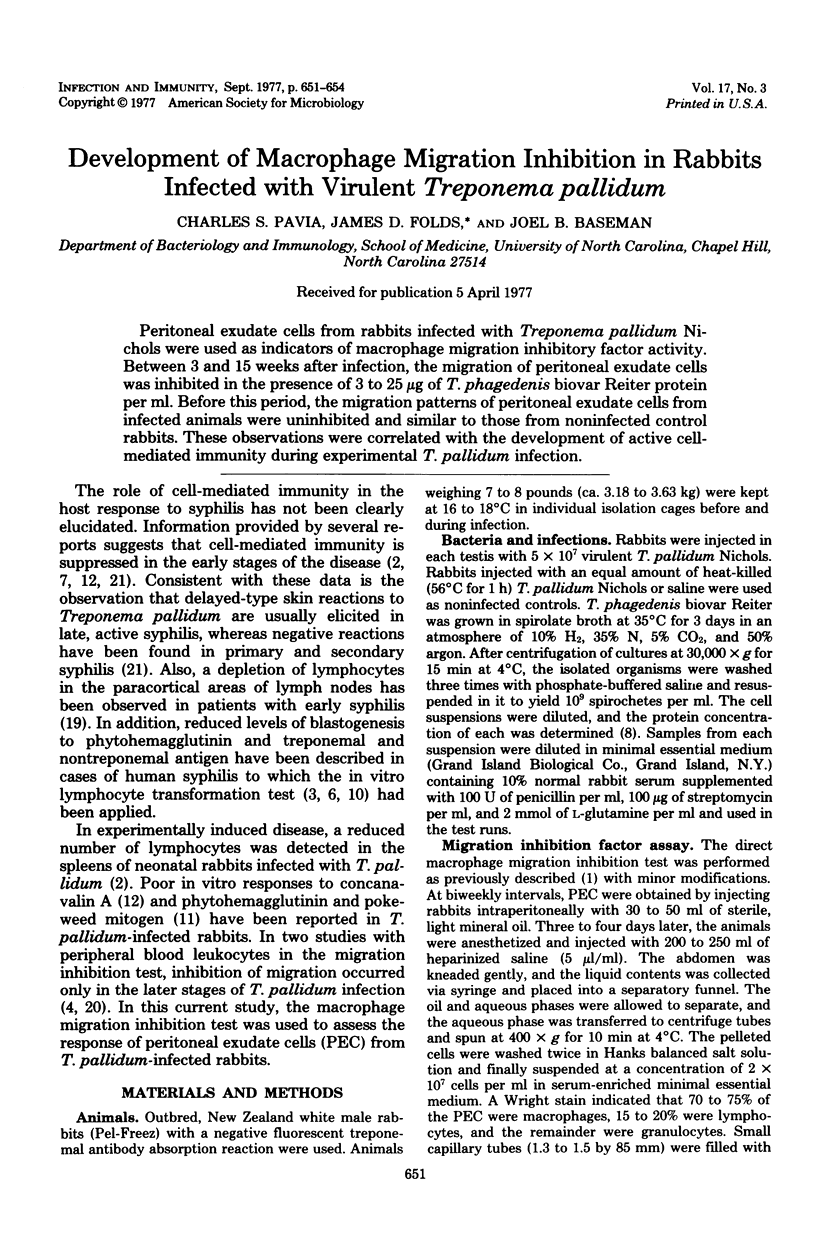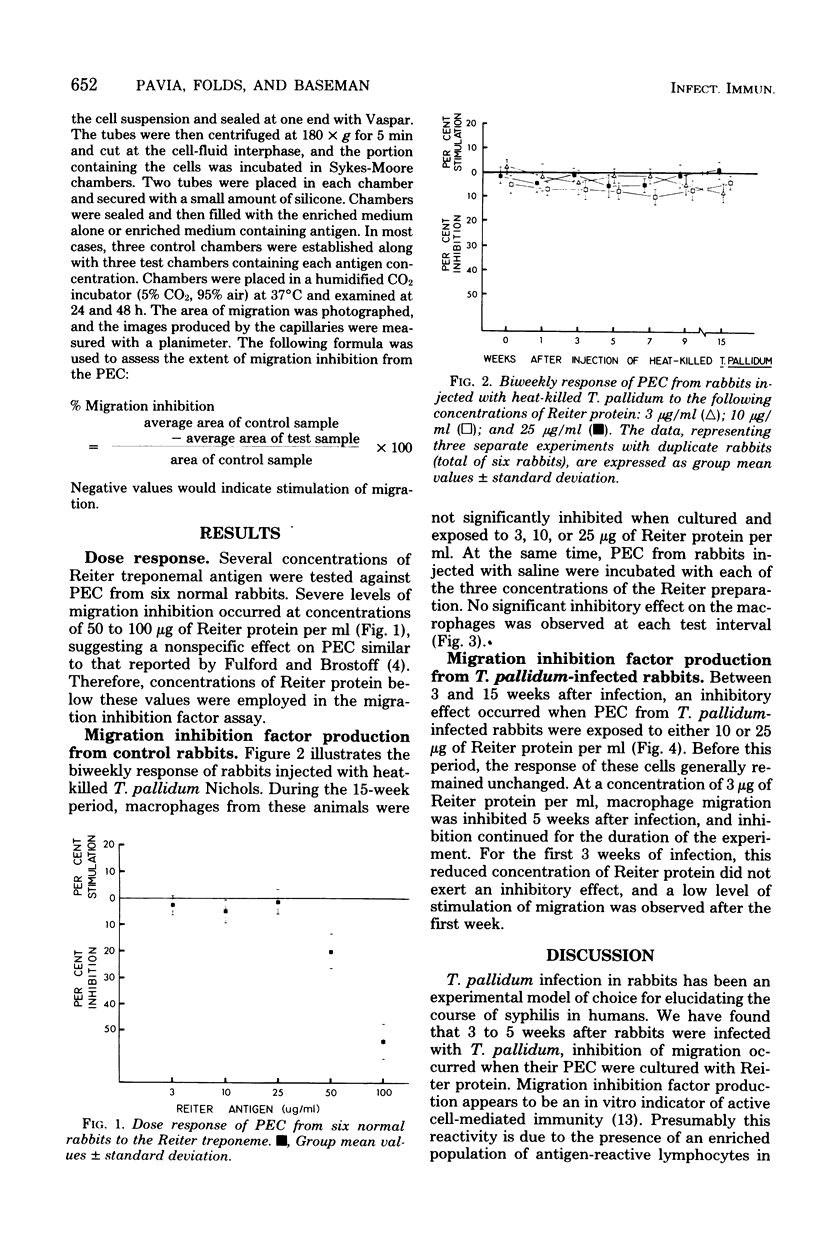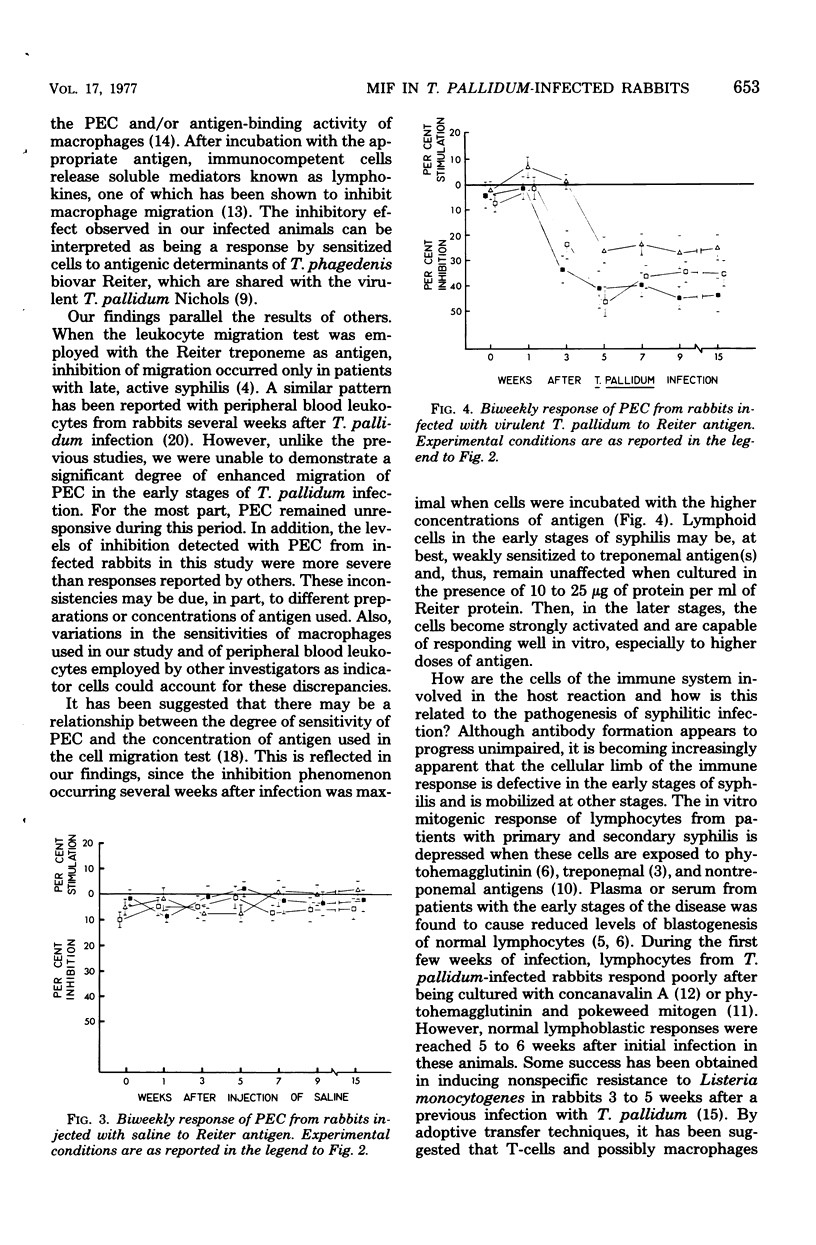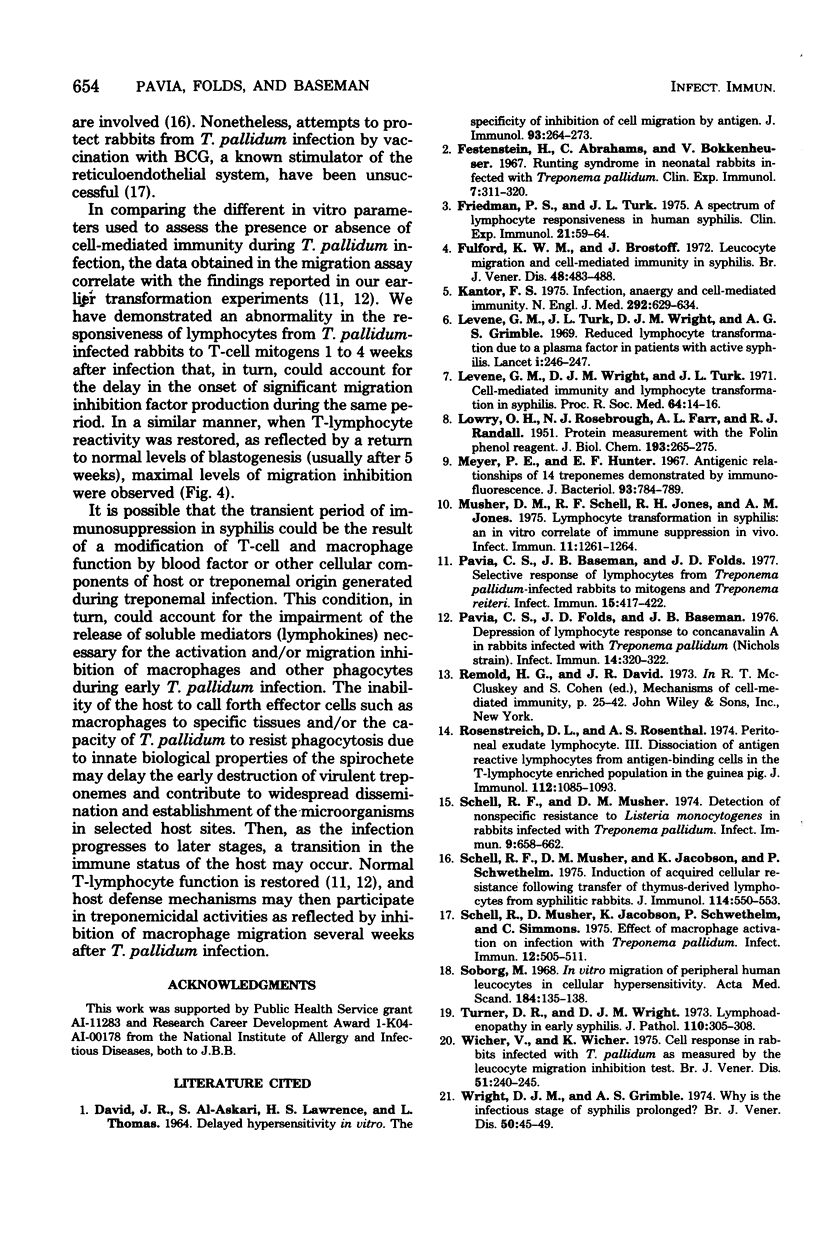Abstract
Peritoneal exudate cells from rabbits infected with Treponema pallidum Nichols were used as indicators of macrophage migration inhibitory factor activity. Between 3 and 15 weeks after infection, the migration of peritoneal exudate cells was inhibited in the presence of 3 to 25 microgram of T. phagedenis biovar Reiter protein per ml. Before this period, the migration patterns of peritoneal exudate cells from infected animals were uninhibited and similar to those from noninfected control rabbits. These observations were correlated with the development of active cell-mediated immunity during experimental T. pallidum infection.
Full text
PDF



Selected References
These references are in PubMed. This may not be the complete list of references from this article.
- DAVID J. R., AL-ASKARI S., LAWRENCE H. S., THOMAS L. DELAYED HYPERSENSITIVITY IN VITRO. I. THE SPECIFICITY OF INHIBITION OF CELL MIGRATION BY ANTIGENS. J Immunol. 1964 Aug;93:264–273. [PubMed] [Google Scholar]
- Festenstein H., Abrahams C., Bokkenheuser V. Runting syndrome in neonatal rabbits infected with Treponema pallidum. Clin Exp Immunol. 1967 May;2(3):311–320. [PMC free article] [PubMed] [Google Scholar]
- Fulford K. W., Brostoff J. Leucocyte migration and cell-mediated immunity in syphilis. Br J Vener Dis. 1972 Dec;48(6):483–488. doi: 10.1136/sti.48.6.483. [DOI] [PMC free article] [PubMed] [Google Scholar]
- Kantor F. S. Infection, anergy and cell-mediated immunity. N Engl J Med. 1975 Mar 20;292(12):629–634. doi: 10.1056/NEJM197503202921210. [DOI] [PubMed] [Google Scholar]
- LOWRY O. H., ROSEBROUGH N. J., FARR A. L., RANDALL R. J. Protein measurement with the Folin phenol reagent. J Biol Chem. 1951 Nov;193(1):265–275. [PubMed] [Google Scholar]
- Levene G. M., Turk J. L., Wright D. J., Grimble A. G. Reduced lymphocyte transformation due to a plasma factor in patients with active syphilis. Lancet. 1969 Aug 2;2(7614):246–247. doi: 10.1016/s0140-6736(69)90010-5. [DOI] [PubMed] [Google Scholar]
- Meyer P. E., Hunter E. F. Antigenic relationships of 14 treponemes demonstrated by immunofluorescence. J Bacteriol. 1967 Mar;93(3):784–789. doi: 10.1128/jb.93.3.784-789.1967. [DOI] [PMC free article] [PubMed] [Google Scholar]
- Musher D. M., Schell R. F., Jones R. H., Jones A. M. Lymphocyte transformation in syphilis: an in vitro correlate of immune suppression in vivo? Infect Immun. 1975 Jun;11(6):1261–1264. doi: 10.1128/iai.11.6.1261-1264.1975. [DOI] [PMC free article] [PubMed] [Google Scholar]
- Pavia C. S., Baseman J. B., Folds J. D. Selective response of lymphocytes from Treponema pallidum-infected rabbits to mitogens and Treponema reiteri. Infect Immun. 1977 Feb;15(2):417–422. doi: 10.1128/iai.15.2.417-422.1977. [DOI] [PMC free article] [PubMed] [Google Scholar]
- Pavia C. S., Folds J. D., Baseman J. B. Depression of lymphocyte response to concanavalin A in rabbits infected with Treponema pallidum (Nichols strain). Infect Immun. 1976 Jul;14(1):320–322. doi: 10.1128/iai.14.1.320-322.1976. [DOI] [PMC free article] [PubMed] [Google Scholar]
- Rosenstreich D. L., Rosenthal A. S. Peritoneal exudate lymphocyte. 3. Dissociation of antigen-reactive lymphocytes from antigen-binding cells in a T lymphocyte enriched population in the guinea pig. J Immunol. 1974 Mar;112(3):1085–1093. [PubMed] [Google Scholar]
- Schell R. F., Musher D. M. Detection of nonspecific resistance to Listeria monocytogenes in rabbits infected with Treponema pallidum. Infect Immun. 1974 Apr;9(4):658–662. doi: 10.1128/iai.9.4.658-662.1974. [DOI] [PMC free article] [PubMed] [Google Scholar]
- Schell R., Musher D., Jacobson K., Schwethelm P. Induction of acquired cellular resistance following transfer of thymus-dependent lymphocytes from syphilitic rabbits. J Immunol. 1975 Feb;114(2 Pt 1):550–553. [PubMed] [Google Scholar]
- Schell R., Musher D., Jacobson K., Schwethelm P., Simmons C. Effect macrophage activation on infection with Treponema pallidum. Infect Immun. 1975 Sep;12(3):505–511. doi: 10.1128/iai.12.3.505-511.1975. [DOI] [PMC free article] [PubMed] [Google Scholar]
- Soborg M. In citro migration of peripheral human leucocytes in cellular hypersensitivity. Acta Med Scand. 1968 Jul-Aug;184(1-2):135–139. [PubMed] [Google Scholar]
- Wicher V., Wicher K. Cell response in rabbits infected with T. pallidum as measured by the leucocyte migration inhibition test. Br J Vener Dis. 1975 Aug;51(4):240–245. doi: 10.1136/sti.51.4.240. [DOI] [PMC free article] [PubMed] [Google Scholar]
- Wright D. J., Grimble A. S. Why is the infectious stage of syphilis prolonged? Br J Vener Dis. 1974 Feb;50(1):45–49. doi: 10.1136/sti.50.1.45. [DOI] [PMC free article] [PubMed] [Google Scholar]


